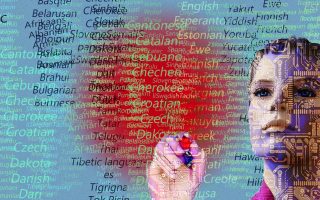In today’s rapidly evolving educational landscape, technology continues to reshape the way we learn and teach.
One of the most groundbreaking innovations in recent times has been the integration of AI-powered tools into education.
Among these, ChatGPT stands out as a revolutionary solution that is transforming traditional tutoring methods into a new era of personalized and effective learning.
In this article, we’ll explore the concept of using ChatGPT for next-level tutoring and delve into its benefits and applications.
Understanding ChatGPT: The Powerhouse of AI Language Models
Before we dive into its tutoring applications, let’s briefly understand what ChatGPT is. ChatGPT is an advanced AI language model developed by OpenAI. It’s based on the GPT (Generative Pre-trained Transformer) architecture, which enables it to generate human-like text based on the input it receives.
What sets ChatGPT apart is its ability to hold natural and coherent conversations, making it an ideal candidate for interactive educational purposes.
The Rise of AI-Powered Tutoring.
Traditional tutoring has always been effective, but it comes with limitations. A single tutor can only handle a limited number of students, and the availability of tutors with expertise in various subjects can be a challenge.
This is where AI-powered tutoring solutions like ChatGPT step in, offering a scalable and personalized approach to education.
Personalized Learning at Scale.
ChatGPT has the capability to provide personalized learning experiences to a large number of students simultaneously.
Through its natural language processing abilities, it can adapt to individual learning styles and paces. Each student can interact with ChatGPT in a conversational manner, asking questions, seeking explanations, and clarifying doubts.
This level of interaction fosters a sense of one-on-one tutoring that is otherwise difficult to achieve in a traditional classroom setting.
Access to Expertise.
One of the standout features of ChatGPT is its vast knowledge base. It can provide information and explanations across a wide array of subjects, making it a versatile tool for students seeking guidance in various disciplines.
This is especially beneficial for subjects that might have a shortage of qualified human tutors. With ChatGPT, students can receive accurate and well-researched answers to their questions, regardless of the topic.
24/7 Availability.
Unlike human tutors who have limited availability, ChatGPT is accessible 24/7. This is a game-changer for students who struggle with last-minute questions or those who are in different time zones. The ability to receive instant assistance whenever needed enhances the learning process and empowers students to take control of their education.
Applications of ChatGPT in Tutoring.
The applications of ChatGPT in the field of tutoring are diverse and expansive. Here are a few notable use cases:
1. Homework Help.
Homework assignments have long been a staple of the educational experience. They serve as an essential bridge between classroom learning and independent application of knowledge.
However, homework can also be a source of frustration for students who encounter challenging problems or concepts they struggle to grasp.
This is where the integration of ChatGPT as a homework help tool can make a significant difference.
Breaking Down Complex Problems.
One of the most valuable aspects of using ChatGPT for homework help is its ability to break down complex problems into manageable steps.
Whether it’s a complex mathematical equation, a convoluted physics scenario, or a multi-step literature analysis, ChatGPT can provide step-by-step explanations that guide students through the problem-solving process.
For instance, consider a high school student faced with a calculus problem involving differentiation and integration. These types of problems can be intimidating, especially when attempting them outside of classroom hours. ChatGPT can help out by giving a clear and concise breakdown of each step, including explanations of the rules and principles being applied.
This not only helps the student arrive at the correct solution but also facilitates a deeper understanding of the underlying concepts.
Fostering Independent Learning.
Homework is not just about getting to the right answers—it’s about developing critical thinking skills and promoting independent learning.
ChatGPT aligns perfectly with this goal by providing guidance that encourages students to think through problems rather than simply seeking answers. By offering explanations, insights, and hints, ChatGPT empowers students to tackle challenges with a problem-solving mindset.
Consider a scenario where a student encounters a literature analysis question that requires them to identify and discuss the underlying themes of a novel. Instead of directly providing the answer, ChatGPT can guide the student by asking probing questions: “What recurring motifs have you noticed? How do these motifs contribute to the overall message of the story?” This prompts the student to engage deeply with the material, leading to a more comprehensive understanding of the literary work.
Bridging Knowledge Gaps.
Students often face situations where they encounter gaps in their understanding of a subject. These gaps can hinder their progress and lead to frustration.
ChatGPT’s role in homework help extends to bridging these knowledge gaps. By responding to queries and clarifying doubts, ChatGPT ensures that students can continue their learning journey without being held back by unresolved questions.
Imagine a scenario in which a middle school student is working on a science project involving the water cycle. They might struggle to grasp the concept of evaporation. With ChatGPT’s assistance, they can get a clear explanation of the process, along with relatable examples that solidify their understanding. This not only helps them complete the current assignment but also equips them with knowledge that will be valuable in future lessons.
Promoting Confidence and Autonomy.
Homework assignments can be intimidating, especially when students encounter topics that seem insurmountable. This can lead to a lack of confidence and a reluctance to engage with the material. ChatGPT’s role in homework help goes beyond providing solutions—it boosts students’ confidence and promotes a sense of autonomy in their learning journey.
Maximizing the Benefits of ChatGPT for Homework Help.
To make the most of ChatGPT’s capabilities for homework help, both educators and students can follow these strategies:
For Educators:
- Integration into Lesson Plans: Educators can introduce ChatGPT as a supplementary resource within lesson plans. By framing assignments that encourage students to seek assistance from ChatGPT, educators can foster a dynamic learning environment that blends traditional teaching methods with AI-powered support.
- Prompt Exploration: Educators can encourage students to explore the reasoning behind ChatGPT’s responses. This can lead to insightful classroom discussions about the accuracy of information and the process of arriving at solutions.
- Customized Prompts: Educators can create customized prompts for ChatGPT that align with the curriculum. This ensures that students receive guidance tailored to the specific topics and concepts they are studying.
For Students:
- Specific Questions: When seeking homework help from ChatGPT, formulate specific questions. Clear and concise queries lead to more accurate and relevant responses.
- Feedback Loop: Engage in a feedback loop with ChatGPT. If an explanation is unclear or you need more information, ask follow-up questions to deepen your understanding.
- Use as a Learning Tool: View ChatGPT as a learning tool rather than a shortcut to answers. Take the opportunity to learn from the explanations provided and apply the knowledge to similar problems in the future.
- Balance with Independent Effort: While ChatGPT is a valuable resource, balance its use with independent problem solving and critical thinking. Use ChatGPT’s guidance to enhance your learning, not replace it.
2. Concept Clarification.
Students often encounter concepts that are difficult to understand. ChatGPT can offer clear and concise explanations, simplifying intricate ideas and promoting a deeper comprehension of the subject matter. This is particularly valuable for subjects that require a strong foundation of fundamental concepts.
3. Language Learning.
Learning a new language involves practice and exposure to conversations. ChatGPT can simulate language practice by engaging students in dialogue, correcting their grammar, and suggesting alternative phrases. This immersive experience can significantly enhance language learning outcomes.
4. Test Preparation.
Preparing for exams can be stressful, and students may have numerous questions as they study. ChatGPT can serve as an invaluable study partner, addressing queries and providing additional insights that go beyond standard study materials. This can boost students’ confidence and readiness for exams.
5. Programming Assistance.
In the realm of computer programming, students often encounter coding challenges. ChatGPT can assist by offering coding explanations, debugging guidance, and suggesting potential solutions. This real-time assistance accelerates the learning curve for aspiring programmers.
Best Practices for Effective AI-Powered Tutoring.
To harness the full potential of ChatGPT for educational purposes, consider these best practices:
1. Clear and Specific Queries.
When interacting with ChatGPT, frame your queries as clearly and specifically as possible. This enhances the accuracy of the AI’s responses and ensures that you receive the information you’re seeking.
2. Contextual Learning.
Provide context when asking questions or seeking explanations. Context helps ChatGPT understand the scope of your inquiry, enabling it to provide more relevant and accurate responses.
3. Feedback Loop.
Engage in a feedback loop with ChatGPT. If an answer requires further clarification or if you need more information, ask follow-up questions. This iterative process refines the learning experience and deepens your understanding.
4. Supplement with Traditional Learning.
While ChatGPT is a powerful tool, it’s important to supplement its use with traditional learning methods. Human interaction, hands-on practice, and in-depth study materials remain integral to a well-rounded education.
5. Ethical Use of AI.
Remember that ChatGPT is a tool designed to assist and enhance learning. Avoid using it to complete assignments or tasks dishonestly.
Maintain academic integrity and use AI responsibly.
Looking Ahead: The Future of AI in Education.
As technology continues to advance, the role of AI in education will only expand. AI-powered tutoring solutions like ChatGPT represent a significant step toward democratizing education and making learning accessible to all.
The potential for personalized, on-demand, and expert guidance is immense, and educators, students, and institutions are poised to benefit from this transformative shift.
Conclusion.
ChatGPT is reshaping the landscape of education by ushering in a new era of AI-powered tutoring. Its ability to provide personalized, expert-level assistance around the clock is revolutionizing the way students learn and excel in their academic pursuits.
By leveraging the capabilities of ChatGPT and adhering to best practices, educators and students alike can unlock the full potential of AI in education, propelling us toward a future where learning knows no bounds.




